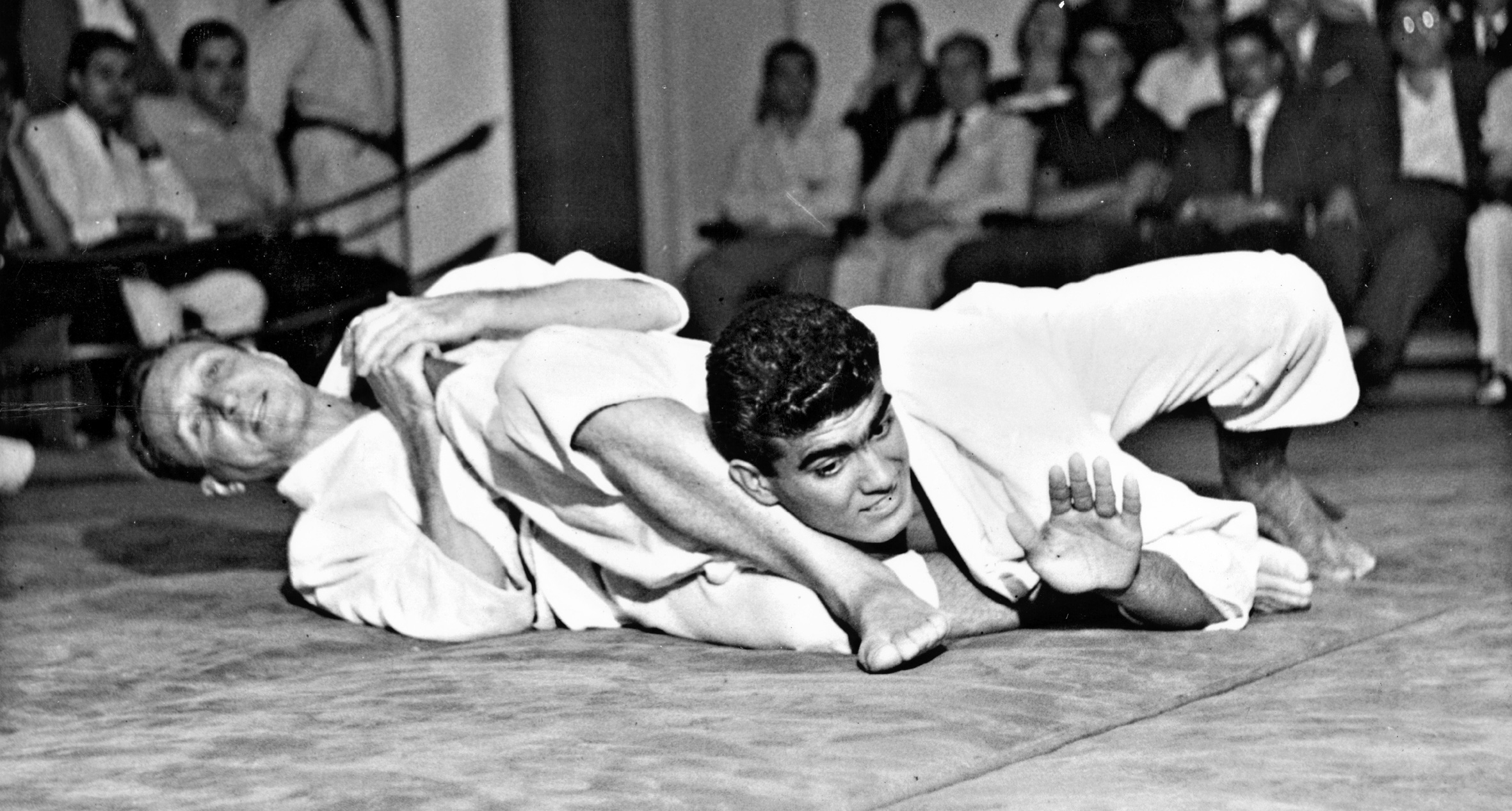

The Japanese government itself did not officially mandate until 1925 that the correct name for the martial art taught in the Japanese public schools should be “judo” rather than “jujutsu”. Thus, when Maeda and Satake arrived in Brazil in 1914, every newspaper announced “jiu-jitsu” despite both men being Kodokan Judoka. The distinction between a jutsu and a do is subtle, and is still used somewhat arbitrarily to this day. Outside Japan, however, this distinction was noted even less. But the Japanese people generally still cling to the more popular nomenclature and call it jiu-jitsu.”
.tif/lossy-page1-440px-H%C3%A9lio_Gracie_(1952).tif.jpg)
Professor Kano is one of the leading educators of Japan, and it is natural that he should cast about for the technical word that would most accurately describe his system. To make the matter clear I will state that judo is the term selected by Professor Kano as describing his system more accurately than jiu-jitsu does. “Some confusion has arisen over the employment of the term ‘judo’. Higashi, the co-author of “Kano Jiu-Jitsu” wrote in the foreword When Maeda left Japan, Judo was still often referred to as “Kano Jiu-Jitsu”, or, even more generically, simply as “Jiu-Jitsu.” There is, however, no Kodokan record of Gracie’s dan grade in judo. Many people (including Masahiko Kimura) believe that Hélio Gracie holds a judo rank of 6th dan. He was promoted to 7th dan in Kodokan judo the day before he died in 1941. He first trained in sumo as a teenager, and after the interest generated by stories about the success of judo at contests between judo and jujutsu that were occurring at the time, he changed from sumo to judo, becoming a student of Kano’s Kodokan judo.

It is often claimed that Brazilian Jiu Jitsu is a development of traditional Japanese jujutsu, not judo, and that Maeda was a jujutsuka. To Kano, judo wasn’t solely a martial art: it was also a sport, a method for promoting physical fitness and building character in young people, and, ultimately, a way (Do) of life. Since its inception, Judo was separated from older systems of Japanese jujutsu teachers, this was more than just Kano’s ambition to clearly individualize his art. Jiu-jitsu, as with its parent art of Judo, is known as more than just a system of fighting. Maeda left Japan in 1904 and visited a number of countries giving “jiu-do” demonstrations and accepting challenges from wrestlers, boxers, savate fighters and various other martial artists before eventually arriving in Brazil on November 14, 1914. Maeda was one of five of the Kodokan’s top groundwork experts that Judo’s founder Kano Jigoro sent overseas to spread his art to the world. It is often claimed that Brazilian Jiu Jitsu is a development of traditional Japanese jujutsu but this effective art all started with Mitsuyo Maeda (aka Conde Koma, or Count Coma in English), an expert Japanese judoka and member of the Kodokan.


 0 kommentar(er)
0 kommentar(er)
